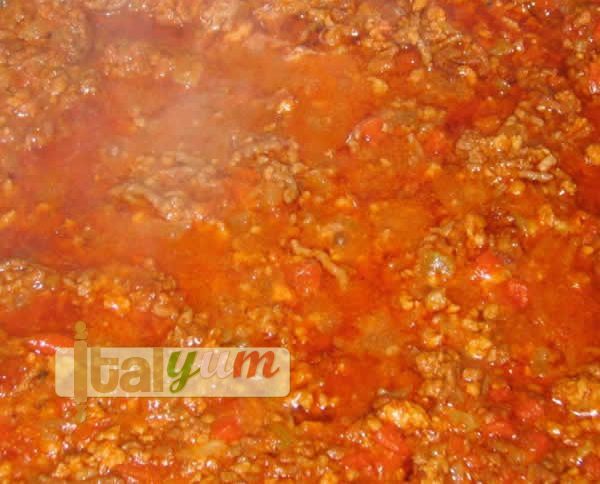Traditional Spaghetti Bolognese sauce (Ragù alla bolognese)
4.5
(2)
Your folders
Your folders
Prep Time: 10 minutes
Cook Time: 180 minutes
Servings: 5
Author : Federico

Ingredients
Export 10 ingredients for grocery delivery
Instructions
Step 1
To start, you need two sauté casseroles, one large (about 30 cm - 12" wide) and one medium size (about 22 cm - 8 3/4" wide). Put 45 ml (3 tablespoons) of olive oil in each pan.
Step 2
Heat the olive oil in the larger pan (medium/high heat). When the oil is hot, put all the mince meat (both beef and pork) into the pan.
Step 3
Stir with a wooden spatula and at the same time press the meat down in order to break it up. We need to avoid the formation of meat lumps.
Step 4
Keep stirring and pressing down until all the meat has browned.
Step 5
Browning the meat could take between 5 and 10 minutes depending on the heat. However, what is important is to give the meat a nice brown colour, but watch you do not burn it.
Step 6
When you see that the meat cannot cope any longer with the heat (otherwise you risk burning it), add the white wine.
Step 7
Let the wine evaporate (it will take a couple of minutes). Meanwhile use the wooden spatula to scrape the bottom of the pan so that nothing sticks to the bottom.
Step 8
Scrape also the side of the pan. Slightly tilting the pan, so that the wine wets the side, will help to remove the substance that sticks to the side (it's all good stuff so we try to put it back into the sauce). After 2 minutes, bring the heat to very low and leave the pan with the meat alone.
Step 9
While the meat is cooking on a very low heat, heat the olive oil in the second pan (medium/high heat). When the oil is hot, add all the chopped vegetables (onion, carrot and celery) into the pan.
Step 10
Stir and sauté the vegetables for about 5 minutes until they are soft.
Step 11
Then, add all the vegetables into the larger pan containing the meat. Put the smaller pan away, from now on all the cooking will be done in the larger pan.
Step 12
Raise the heat a bit. From very low, bring it to low/medium and stir for few seconds so that the meat and vegetables are evenly distributed.
Step 13
Then, add the sieved tomatoes and stir.
Step 14
Season with a tiny pinch of salt and pepper.
Step 15
Stir for few seconds and continue cooking for about 5 minutes.
Step 16
Then, add the hot stock to cover the sauce (my recipe took about 400 ml - 1 3/4 cups). There you go! Now everything is ready for the simmering stage. Bring the heat to very low.
Step 17
Cover with a lid and simmer for 1 hour, stirring occasionally.
Step 18
After 1 hour of simmering, remove the lid and continue simmering for another couple of hours, stirring occasionally, until the sauce is reduced to the right consistency (having completed the third hour, the sauce should have lost most of the water and should be ready to top the pasta).
Step 19
Half an hour before the end, season with salt according to taste. I suggest doing the seasoning at this late stage when the sauce has lost most of the water.
Step 20
Immediately after the seasoning, add the milk.
Step 21
Stir and continue simmering until you have reached the end of the third hour. Now, since you added the milk, it could be that you need some extra simmering to bring the sauce to the right consistency. Do not be worried about simmering for an extra half an hour or more, if required, because the more you simmer the better.
Step 22
Finally, we have got the ragù alla bolognese. Now, it is up to you how to use it. You can top pasta, you can use it for lasagne or put part of the sauce in the freezer to use the first time you are in a rush.